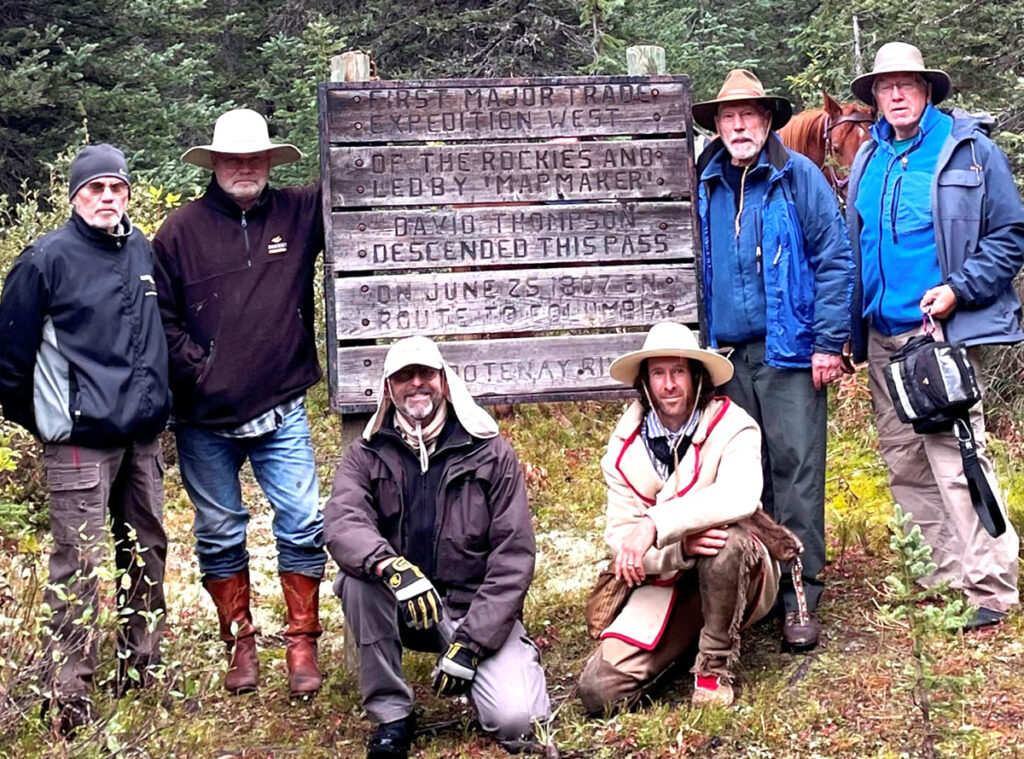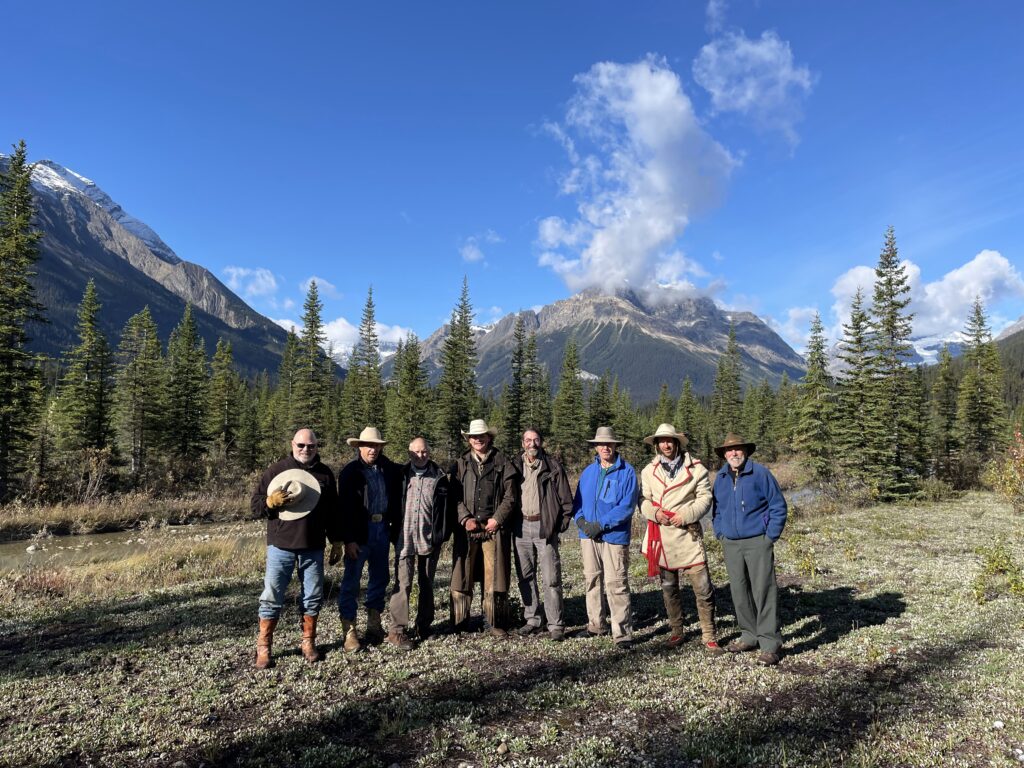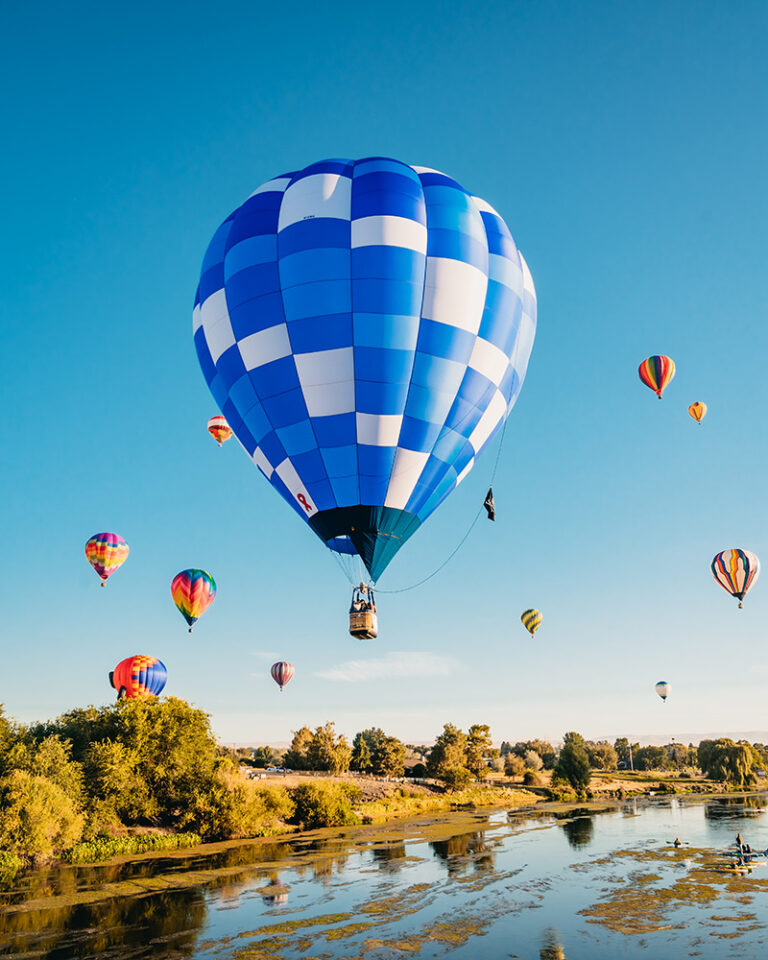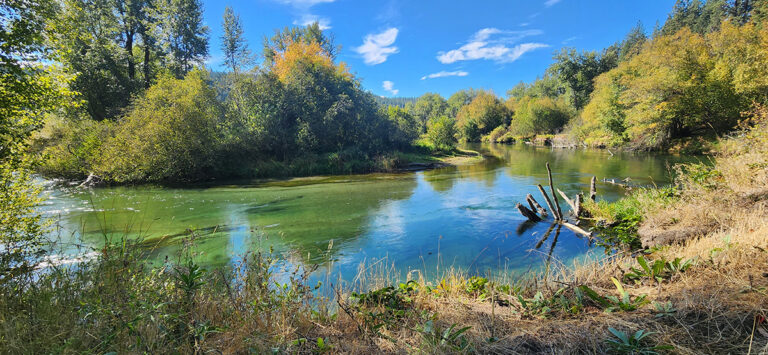By Mark Longmeier
Our trek to Howse Pass in Banff National Park was born from a Spokane Community College senior-oriented ACT-2 seminar course. Inspired by David Thompson’s life, who was one of the greatest explorers and cartographers for the Canadian Prairies and the Inland Northwest, several class members shared an ambition to retrace Thompson’s crossing of the continental divide. Five of us, ages 64 to 79, planned a four-day backcountry trip in September of 2023 to do just that, enlisting a guide who would give us insight during the trek.
First, a bit about Thompson. Apprenticed to the Hudson’s Bay Company (HBC), David Thompson landed at the York factory on the Hudson Bay as a fourteen-year-old clerk in 1784. He rose through the fur trade business ranks, establishing trading houses on rivers throughout the Canadian prairie and applying his cartography skills by mapping the region. By 1801, Thompson was poised to cross the Rocky Mountains. After several failed attempts, the natives pointed him to an ancient trail over the Rockies. In 1807, he set out to Howse Pass from Rocky Mountain House following the Saskatchewan River to gain entry to the Inland Northwest area drained by the Columbia River.

Rivers were the highways in Thompson’s era. Our highway was the Ice Field Parkway in Banff National Park, with the jumping off point to Howse Pass just south of The Saskatchewan River Crossing at Mistaya Canyon. We engaged a horse pack outfitter as our backcountry guide. The original Thompson trail has been neglected and quickly became a downfall-clogged path, forcing diversion to the adjacent braided Howse River flood plain. The route wound through a pristine wilderness, flanked by snow-dusted peaks. We established camp at the source of Howse River prior to ascending to Howse Pass.
Wanting to immerse ourselves into Thompson’s culture, we asked Shaun Deller (shaundeller.com), to serve as our fur trade era cultural guide. Shaun has an extensive background in the era history as well as a myriad of practical skills common to the traders. He is a period artisan. He has participated in numerous mountain man reenactments and provided consultation for fur trade era documentaries. In 2022, he completed fur trade era interpretative murals on the Spokane House visitor center.
While our group utilized Gore-Tex, polyester, and down, Shaun was outfitted in woolens and buckskin, with a buffalo hide for sleeping. He demonstrated the everyday skills of a fur trapper. Campfire discussions ensued to enlighten the transport of trade goods and furs between Fort William on Lake Superior and the Inland Northwest trading houses.
By 1810, Thompson had established four trading houses: Kootanae House, near Invermere, BC; Kullyspell House on Lake Pend Oreille; Salish House near Thompson Falls, Montana; and Spokane House on the Little Spokane River. Subsequent economics resulted in the closure of three houses, with only the Spokane House remaining active until 1826 when the HBC moved trade to Fort Colville near Kettle Falls as part of the Columbia River trade network linked to Fort Vancouver. Archeological remnants remain only for the Spokane and Kootanae Houses.

Our group’s adventure through Banff with a cultural guide provided a visual and environmental immersion that furthered our admiration for the Thompson-era outdoors explorers. The Inland Northwest has seen over two hundred years of European exploration, but Indigenous people had inhabited and traveled the area for thousands of years prior to European presence. Awareness of this history provides perspective and generational knowledge, which will enhance the current day explorer’s experience.
Four days in the backcountry and a 40-mile round trip on horseback begged the question, who signed us up for this? Discretion became the better part of valor for a day of rest around the campfire to spin yarns. En route, visits to Rocky Mountain House, the Kootenae House site, and Canal Flats, which Thompson traversed from the Columbia River headwaters to the Kootenai River, were a highlight and amplified our understanding of Thompsons’ travels.
Mark Longmeier has been a resident of Spokane for the last 48 years. Educated in engineering sciences and business administration, his secondary interest has been history.













